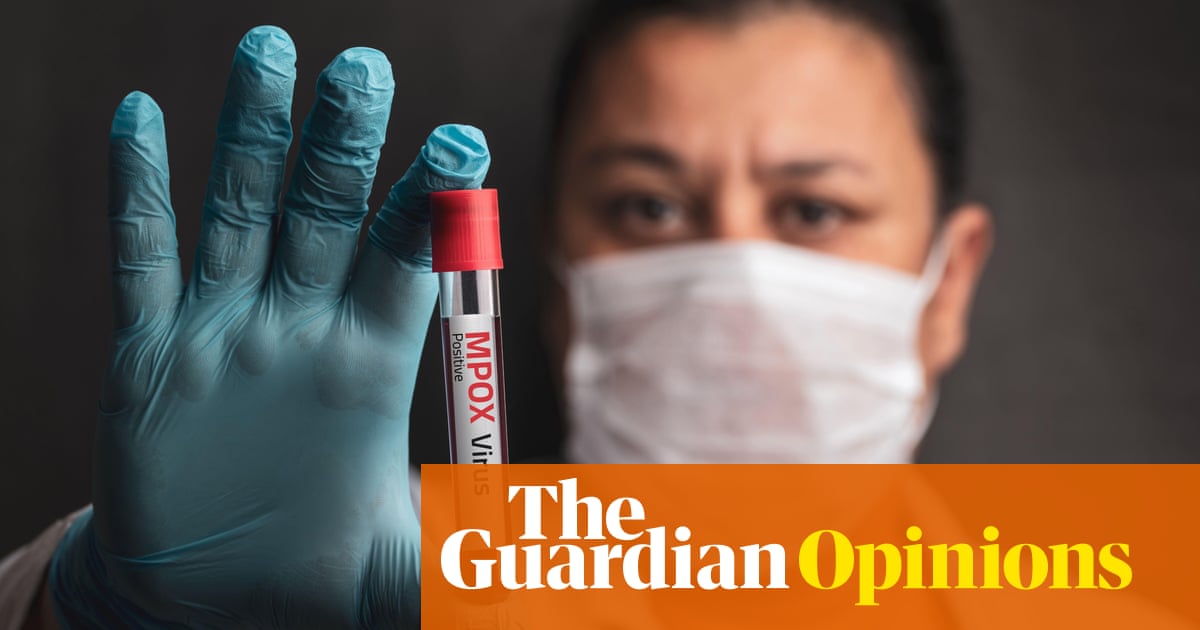World
The world has responded too slowly to the new mpox outbreak – here’s what it needs to do now | Mona Nemer

Over the past year, cases of a new strain of mpox known as clade 1b began to rise significantly across central Africa, leading the World Health Organization (WHO) to announce its highest alert, declaring mpox a public health emergency of international concern. In the last month, this strain has been detected in the UK, the US, Germany, Sweden and India.
The first 100 days of an outbreak are critical to determining its course. In 2021, in response to the Covid-19 pandemic, the 100 Days Mission was agreed by global leaders – meaning that they committed to getting safe, effective and affordable tests, treatments and vaccines rolled out within 100 days of a pandemic threat being identified.
The International Pandemic Preparedness Secretariat is an independent, time-limited entity established to support implementation of the mission. We have been closely monitoring the status of tests, treatments and vaccines since the clock for mpox started ticking. This week marks 100 days since the WHO declaration – but has the world done enough to achieve the 100 Days Mission for the disease?
There have been some winning moments. The Africa Centres for Disease Control (Africa CDC) sounded the continental alarm for mpox, demonstrating regional leadership. We’ve seen accelerated regulatory approvals for vaccines, and vaccine donation pledges from various countries. This has been possible due to vaccine development between outbreaks, enabling us to respond with greater agility to potential threats.
However, vaccines alone cannot end outbreaks. Despite continuing vaccination campaigns, mpox continues to spread around the globe.
The true number of cases is probably being masked by challenges in the area of testing. Effective and accessible tests are vital for early disease detection and containment. At day zero, the only approved tests for mpox needed to be done in a laboratory, conditions that are unlikely to be accessible in remote areas. Africa CDC has a goal of testing 80% of suspected cases. However, as of this week, only 36% of suspected cases had been tested in the DRC. It can take two to three days to get results from laboratories, by which time an infected person could infect close contacts.
To increase accessibility, the WHO has authorised a test that can be done without a laboratory, near to where doctors are seeing cases, for emergency use in affected countries, which also delivers quicker results. Africa CDC has procured 42,000 test kits to boost local testing capacity and support decentralisation. The Foundation for Innovative New Diagnostics (Find), the diagnostics alliance, has analysed more than 200 kinds of tests, and evaluated more than 70 from developers to identify promising point-of-care antigen-based rapid diagnostic tests (RDTs), which would be able to be used in a similar way to the rapid Covid tests we are familiar with. However, at present few of these tests have the sensitivity levels to meet WHO standards.
To sum it up, at day 100, we still don’t have a WHO-approved antigen-based RDT, or true point-of-care tests that can distinguish between mpox clades (ie, which type it is) and be easily used in rural communities. Without tests at the community level, efforts to monitor and contain spread will be impeded. Until then, we must decentralise laboratory testing to districts and strengthen human and infrastructural testing capacity.
There is some hope that treatments used for other diseases could be repurposed for mpox, with clinical trials under way and monoclonal antibody-based drugs being explored. But the reality is that after 100 days, no therapeutic is available for the new variant. For people unable to use or access vaccines, treatments are vital, but lack of funding and political attention mean that very few drugs are being developed for pandemic-prone diseases. Efforts are being made to address this through the establishment of a therapeutics development coalition – though this will be a long road, with most candidate treatments still in preclinical stages.
It may not yet be mission accomplished, but we won’t give up. The longer mpox is in circulation, the higher the risk of new variants threatening the efficacy of existing vaccines, and tests and treatments in development. Leaders should actively commit to the equitable rollout of pledged vaccines and implementing community-centred public health measures. They should be accelerating access to promising point-of-care tests that identify different mpox strains and speeding up the evaluation of repurposed treatments, while also investing in development for new treatments and committing to expanding and expediting clinical trials for any promising drugs that arise.
Mpox is testing our resolve and our preparedness. Despite progress, the sad reality is that if we had learned and embedded the lessons from previous emergencies, we could have responded faster. This is the second mpox emergency in two years. If we had accelerated research and development in 2022, we might have had many more tools at our disposal now.
Pandemic risk is changing, and outbreaks are no longer rare events. This is even clearer with the recent spillover of H5N1, a subtype of flu, from animals to humans; the largest recorded outbreak of dengue; and the spread of Marburg virus disease.
The 100 Days mission provides a framework to protect people and countries in this interconnected world. But the work must start well before day zero. It is the marathon before the sprint, and all sectors and government levels must take part in this global effort.
Together we can make pandemics history, but are we willing to do so?
-
Do you have an opinion on the issues raised in this article? If you would like to submit a response of up to 300 words by email to be considered for publication in our letters section, please click here.










